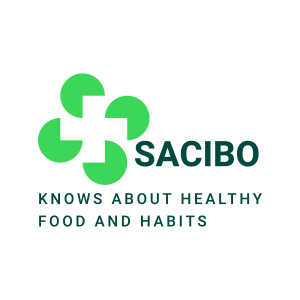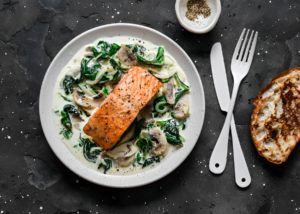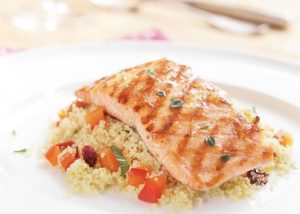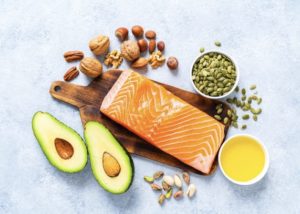- Home
- /
- Healthy Meal
- /
- Products
- /
- Savoring the Sizzle: The...
- /
- Savoring the Sizzle: The...
In the world of culinary admiration, few entities induce as much desire and polarized debate as the sizzle of a perfectly seared steak or the aroma of a succulent lamb chop. Red meat, a staple of diets across cultures, has been a source of sustenance, celebration, and controversy for centuries. Its rich flavors, unparalleled textures, and diverse culinary applications have made it a centerpiece of our plates and palates.
Yet, red meat’s story extends far beyond the realms of taste and tradition. It delves into the realms of nutrition, health, sustainability, and ethics, inviting us to explore a multifaceted narrative where science, culture, and personal choice intersect. From its role as a protein powerhouse to its potential impact on our cardiovascular health, from the ethical considerations of animal farming to the intricate dance of flavor on our taste buds, red meat’s tale is one of complexity, contradiction, and discovery.
In this comprehensive exploration, we commense a journey through the planet of red meat. We delve deep into its influence on our bodies, examining the interplay of nutrients and potential health concerns. We navigate the intricate web of cultural significance and ethical considerations that surround its production. And we savor the flavors and textures that have made red meat a timeless culinary treasure.
So, join us as we fire up the grill, sharpen our knives, and dig into the tantalizing world of red meat. As we carve into this hearty and sometimes contentious topic, we’ll uncover the layers of knowledge that can empower us to make wise choices about the role of red meat in our diets and in our lives.
1. What is Red Meat Above All?
Before delving deeper into the influence of red meat on our bodies, it’s important to establish what we mean by “red meat.” Red meat is a broad category that encompasses the flesh of mammals, particularly those with higher levels of myoglobin, a protein that gives meat its reddish color. Here’s a breakdown of the types of meat that fall into the red meat category:
1.1. Beef: A Hearty Red Meat Choice
Beef is perhaps the most well-known red meat, coming from cattle. It includes cuts such as steak, ground beef, and roasts.
Beef, often considered the quintessential red meat, holds a special place in culinary customs all over the world. It’s cherished for its rich flavor, versatility, and nutrient density. Here’s a closer look at beef:
Varieties
Beef comes in various cuts, each with its unique characteristics. Some popular cuts include sirloin, ribeye, tenderloin (filet mignon), and ground beef. The choice of cut can significantly affect the texture and taste of your beef dishes.
Nutritional Profile
Beef is a nutritional powerhouse. It’s an splendid source of high-quality protein, granted all essential amino acids neededfor muscle growth, repair, and general health. Beef is also rich in vitamins and minerals, including B12, iron, zinc, and selenium, which are pivotal in maintaining vitality and well-being.
More about protein, including amino acids, read in the article: Proteins and Healthy Eating: The Marvels of Molecular Machines
Heme Iron
Beef is one of the richest sources of heme iron, a type of iron that is efficiently taken by the body. This makes beef a valuable dietary choice for orecluding iron-deficiency anemia, especially in populations with increased iron needs, such as pregnant women and growing children.
Culinary Traditions
Beef has a prominent role in various culinary customs. From American classics like burgers and barbecue to international dishes like Italian Bolognese, French boeuf Bourguignon, and Argentinian asado, beef’s versatility knows no bounds.
In summary, beef is a beloved red meat choice that delivers a bounty of essential nutrients and is deeply embedded in culinary cultures worldwide. When savored in moderation and as part of a diverse and balanced diet, beef can be a flavorful and nutritious addition to your meals.
1.2 Pork: A Versatile Red Meat Option
Pork is another common red meat, sourced from domesticated pigs. Common pork products include pork chops, bacon, and pork loin.
Pork, often referred to as “the other white meat,” is a highly versatile and widely enjoyed red meat. With its succulent flavor and culinary adaptability, pork offers several benefits:
Nutrient-Rich
Pork is a nutrient-dense meat, ensuring essential vitamins and minerals. It’s an superb source of high-quality protein, delivering the amino acids required for muscle growth and repair. Pork is also rich in essential vitamins like B12, which supports nerve function, and minerals such as zinc, selenium, and phosphorus, vital for various bodily functions.
Versatility
Pork’s versatility shines in the kitchen. It can be roasted, grilled, sautéed, braised, or slow-cooked to perfection. From succulent pork chops and tenderloin medallions to savory pulled pork and crispy bacon, the possibilities are endless.
Flavor Absorption
Pork’s mild savor makes it an superb canvas for absorbing various seasonings and marinades. It pairs well with sweet, savory, and spicy ingredients, allowing for diverse culinary creations.
Cultural Significance
Pork is a central in the cuisines of many cultures. From German bratwurst and Italian prosciutto to Chinese char siu and Mexican carnitas, pork-based dishes are beloved worldwide, showcasing the adaptability of this meat.
Pork’s adaptability, nutrient content, and cultural significance make it a valuable addition to a diverse diet. By selecting lean cuts and preparing pork mindfully, individuals can enjoy its delicious flavors and reap its nutritional benefits while maintaining a healthy lifestyle.
1.3. Lamb: A Flavorful Red Meat with Unique Qualities
Lamb meat oriiginates from young sheep and is typically leaner and milder in flavor contrasted to beef. It’s usually used in dishes like lamb chops and kebabs.
Lamb is a red meat famed for its distinctive flavor and succulent texture. Whether roasted, grilled, or braised, lamb offers a range of unique qualities that set it apart:
Flavor Profile
Lamb’s flavor is often depicted as rich, rough, and slightly gamey. This distinctive taste makes it a favorite among those seeking a more adventurous palate. The flavor can difer depending on the animal’s diet and age.
Nutrient Density
Lamb is a nutritional powerhouse. It’s an excellent source of complete protein, offering all crucial amino acids are necessary for bodily functions. Lamb is abundant in B vitamins, particularly B12, niacin, and riboflavin, which play essential roles in metabolism and energy creation.
Versatility
Lamb can be prepared in various ways, catering to a wide range of culinary preferences. From traditional roast leg of lamb to Mediterranean-inspired lamb kebabs and Indian lamb curry, the versatility of lamb in global cuisines is truly impressive.
Cultural Significance
Lamb holds cultural significance in many regions, featuring prominently in holiday and celebratory dishes. For instance, it has a central significance in Easter feasts, and lamb-based dishes are cherished in Middle Eastern, Mediterranean, and Central Asian cuisines.
It’s worth noting that lamb’s unique flavor and texture may not appeal to everyone, but for those who appreciate its distinct taste, it can be a culinary delight. By incorporating lamb into a balanced diet, individuals can savor its exceptional qualities while enjoying the nutritional benefits it offers.
1.4 Veal: A Delicate Red Meat Option
Veal is the meat from young calves, and it tends to be lighter in color and flavor than beef. It is often used in dishes like osso buco.
Veal is a unique and delicately flavored red meat that distinguishes itself from other meats in several ways. Let’s explore the distinctive qualities of veal:
What is counted veal
Veal originates from young calves, usually around 3 to 16 weeks old, which sets it apart from beef, derived from older cattle. This youthfulness contributes to its tender texture and subtle flavor.
Mild Flavor
Veal boasts a mild, delicate flavor spectrum. Its savor is oftentimes depicted as lighter and less gamey than beef, making it an excellent canvas for various culinary creations.
Tender Texture
Due to the calves’ young age and limited muscle use, veal is exceptionally tender. This tenderness makes it a sought-after choice for dishes that require quick cooking, such as veal scallopini or piccata.
Nutrient Density
Veal is a nutrient-dense meat, offering an array of essential nutrients. It’s a notable source of high-quality protein, supplying all essencial amino acids nedded for bodily functions. Veal is also rich in vitamins like B12, riboflavin, and niacin, which are key in energy metabolism and overall health.
Variety of Cuts
Veal comes in various cuts, including chops, cutlets, and roasts. Its versatility allows for a wide range of cooking methods and flavor pairings.
Cultural Significance
Veal holds cultural significance in various cuisines, particularly in European culinary traditions. Classic dishes like Wiener Schnitzel from Austria and Osso Buco from Italy showcase the versatility and appeal of veal.
While veal may not be as commonly consumed as other red meats, its distinctive qualities and flavor make it a noteworthy choice for those seeking a unique culinary experience within the realm of red meat.
1.5 Game Meat: A Wild and Distinctive Red Meat Experience
Game meat relates to the meat of wild animals such as deer, elk, bison, and boar. These meats are often leaner and can offer unique flavors compared to domesticated red meats.
Game meat, derived from wild animals, offers a unique and flavorful departure from conventionally raised meats. Its distinct qualities and eco-conscious appeal have garnered attention among adventurous eaters and environmentally conscious consumers alike. Let’s explore the world of game meat:
Wild Origins
Game meat encompasses a wide range of animals, including deer, elk, moose, rabbit, wild boar, and more. These animals are typically hunted in their natural habitats, leading to meat that reflects their natural diet and lifestyle.
Distinctive Flavor
Game meat is celebrated for its bold and distinctive flavors, often described as earthy, rich, and slightly gamey. The taste can difer depending on the animal’s diet, age, and habitat.
Lean and Nutrient-Rich
Game meat is generally leaner than domestically raised livestock. This leanness results in lower fat content and fewer calories. Despite its leanness, game meat is abondant in crucial nutrients, including high-quality protein, iron, zinc, and B vitamins.
Eco-Friendly Sourcing
Game meat is usually counted a more sustainable choice compared to conventionally farmed meats. These animals live in their natural ecosystems, reducing the environmental impact associated with livestock farming. Additionally, well-managed hunting can help control wildlife populations and protect fragile ecosystems.
Cultural Significance
Game meat has a long history in various culinary traditions worldwide. It plays a prominent role in dishes like venison stew in Europe, biltong (dried game meat) in South Africa, and venison jerky in North America.
Adventure in Cooking
Cooking with game meat can be an exciting culinary adventure. The distinctive flavors and textures of game meats inspire creativity in the kitchen. From hearty stews and roasts to elegant fillets and sausages, game meat offers endless possibilities.
Diversity of Options
Game meat provides a diverse range of options for those looking to explore. Whether you’re interested in venison, pheasant, quail, or wild boar, game meat offers a world of culinary exploration.
Balanced Diet
When taken in moderation and as part of a balanced diet, game meat can be a flavorful and nutrient-rich addition to meals. Pairing game meat with seasonal vegetables and whole grains complements its natural flavors and provides a well-rounded dining experience.
In summary, game meat suggests a unique and sustainable option for those seeking adventurous flavors and eco-conscious choices. Its distinctive taste, cultural significance, and lower environmental impact make it an appealing choice for those looking to widen their culinary horizons.
1.6 Organ Meat: Nutrient-Rich Powerhouses
Organs from red-meat-producing animals, such as liver, kidney, and heart, also fall into the type of red meat. These organs are nutrient-dense but are consumed less frequently in many Western diets.
Organ meats, also noted as offal, are a type of red meat that involved the internal organs of animals. These often-overlooked cuts are treasure troves of essential nutrients and unique flavors. Let’s rummage about the world of organ meats:
Nutrient Density
Organ meats are nutritional powerhouses. They are exceptionally rich in significant vitamins and minerals, such as B vitamins (B12, riboflavin, niacin), iron, zinc, selenium, and copper. These nutrients have vital significance in energy metabolism, immune function, and general well-being.
More about zinc read here: Zinc: The Essential Mineral for Health and Well-being
Unique Flavors
Each organ has its distinct flavor and texture. For example, liver is prized for its rich, earthy taste, while heart is lean and boasts a unique, robust flavor. Embracing organ meats opens the door to diverse culinary experiences.
Variety of Organs
Organ meats encompass a wide range of cuts, including liver, heart, kidney, tongue, and more. Each organ offers a unique nutrient profile and culinary potential.
Historical Significance
Organ meats have a long history in traditional cuisines around the world. They have been valued for their nutrient density and ability to make the most of every part of an animal.
Cultural Significance
Organ meats play pivotal roles in various cultural dishes. From French pâté and Italian liver bruschetta to Scottish haggis and Mexican menudo, these meats hold cultural significance and are celebrated in traditional recipes.
Cooking Versatility
Organ meats can be prepared in a variety of ways, from grilling and pan-searing to slow cooking and braising. Incorporating them into your culinary diversity can lead to exciting and flavorful dishes.
To sum up, organ meats are nutrient-rich gems that offer a wealth of flavors and culinary possibilities. Embracing these cuts can not only diversify your diet but also provide a nutrient boost, making them a beneficial addition to a health-conscious and sustainable dining experience.
It’s crucial to notice that while poultry and fish are excellent sources of protein, they do not relate to the red meat type. Poultry, like chicken and turkey, and fish have lower myoglobin levels, resulting in a lighter meat color.
Understanding what constitutes red meat is fundamental when discussing its effect on our health and the environment, as various types of meat can have varying nutritional profiles and associated considerations.
2. Nutritional Advantages of Red Meat
Red meat is a potent source of vital nutrients that are crucial in maintaining our health:
2.1. Protein Powerhouse: Red Meat’s Nutritional Might
Red meat stands out as a nutritional powerhouse, providing an abundant source of high-quality protein. This macronutrient is a fundamental building block of life, with critical roles in virtually every aspect of bodily function. Here’s a closer look at why red meat is celebrated as a protein powerhouse:
Complete Protein Source
Red meat, whether from beef, lamb, or game animals, is a complete protein source. This means it comprises all essential amino acids that the body cannot generate on its own. These amino acids are significant for divers physiological processes, such as muscle growth, tissue repair, and immune function.
About all amino acids and their functions in our body read here: Proteins and Healthy Eating: The Marvels of Molecular Machines
High Protein Density
Red meat is densely packed with protein. A single serving of red meat, such as a steak or lamb chop, can provide a significant portion of your daily protein needs. This makes it an superb choice for those looking to meet their protein requirements efficiently.
About what ratio of protein is optimal for our health read here: Proteins Fats Carbohydrates Ratio in Healthy Eating: Why matters
Quality Protein
The protein discovered in red meat is of high quality, as it contains a balanced ratio of essential amino acids. This makes it highly digestible and bioavailable, ensuring that your body can effectively utilize the protein it provides.
Satiety
The protein volume in red meat contributes to a sense of fullness and satiety after a meal. Including red meat in your diet can succor control appetite and support weight management when consumed mindfully.
Balanced Nutrition
While red meat offers a robust protein profile, it’s important to consume it as part of a balanced diet. Pairing red meat with a diversity of vegetables, whole grains, and other nutrient-rich foods ensures a comprehensive nutritional intake.
About the optimal proportion of red meat in your plate read in the article: The Principle of the Healthy Eating Plate
In conclusion, red meat is celebrated as a protein powerhouse due to its complete protein profile, high protein density, and rich content of vital nutrients like iron, vitamin B12, and minerals. When enjoyed in moderation and as part of a balanced diet, red meat can be a beneficial component of a nutritionally diverse and satisfying meal plan.
2.2. Iron: Red Meat’s Vital Nutrient
Iron is a vital nutrient found abundantly in red meat, playing a pivotal role in maintaining general health. This essential mineral is indispensable for several critical functions in the body. Here’s a closer look at iron and why it’s so significant in the context of red meat consuming:
Oxygen Transport
One of iron’s primary roles is to facilitate the transport of oxygen throughout the body. Hemoglobin, a protein in red blood cells, relies on iron to bind with oxygen in the lungs and transport it to tissues and organs. Without sufficient iron, oxygen delivery to cells becomes compromised, leading to fatigue and reduced physical performance.
Energy Metabolism
Iron is essential for energy production at the cellular level. It is a key component of enzymes switched on in the metabolism of carbohydrates, fats, and proteins. Adequate iron levels are necessary for maintaining optimal energy levels and preventing fatigue.
Immune Function
Iron supports a robust immune system. It plays a role in the creating of white blood cells, which are critical for defending the body against infections and illnesses. A well-functioning immune system is vital for general health and well-being.
Cognitive Health
Iron is crucial for cognitive development and function. Insufficient iron intake, particularly during critical growth stages, can lead to cognitive impairments in children. In adults, iron deficiency fcan result in cognitive decline and reduced mental alertness.
Preventing Anemia
Iron deficiency is a leading cause of anemia, a state distinquished by a reduced number of red blood cells or insufficient hemoglobin. Anemia can lead to fatigue, weakness, and impaired physical and cognitive function. Including iron-rich foods as red meat in the diet can serve to prevent and alleviate anemia.
A Balanced Diet
Iron from red meat is in the form of heme iron, which is well-absorbed by the body. This composes red meat an efficient source of dietary iron, particularly for individuals with increased iron needs, such as pregnant women and growing children.
Moderation is Key
While iron is essential for health, excessive intake can have adverse effects. It’s essential to strike a balance in iron consumption. For individuals at risk of iron overload, such as those with certain genetic conditions, moderation in red meat intake and awareness of overall iron intake is crucial.
In summary, iron is a vital nutrient found in abundance in red meat, contributing to oxygen transport, energy metabolism, immune function, and cognitive health. Taking red meat as part of a harmonious diet can succor meet iron needs and support overall well-being, but it’s important to maintain a balanced approach to iron intake to guarantee optimal health.
2.3 Vitamins and Minerals in Red Meat: A Nutrient Treasure Trove
Red meat serves as a nutrient-rich reservoir of vital vitamins and minerals, offering a wide array of micronutrients that are crucial for general health and well-being. Let’s study the diverse spectrum of vitamins and minerals that make red meat a nutritional powerhouse:
Vitamin B12
Red meat is famous for its exceptional content of vitamin B12, a water-soluble vitamin essential for nerve function, DNA synthesis, and red blood cell creation. Adequate B12 intake is critical for maintaining energy levels and cognitive health.
Zinc
Zinc is a crucial mineral discovered in red meat, playing pivotal roles in immune function, wound healing, and DNA synthesis. Adequate zinc intake is crucial for overall health, and red meat procures a valued source of this essential mineral.
More about zinc and its role in our well-being read here: Zinc: The Essential Mineral for Health and Well-being
Selenium
Red meat comprises selenium, a trace mineral with antioxidant properties. Selenium helps protect cells from oxidative damage and supports thyroid function. Consuming red meat contributes to selenium intake, promoting overall well-being.
Phosphorus
Phosphorus is abundant in red meat and is vital for endorsing strong bones and teeth, DNA synthesis, and energy creation. Red meat suggests a substantial supply of this essential mineral.
Niacin (Vitamin B3)
Niacin, detected in red meat, is a B vitamin crucial for metabolism and overall cellular function. It supports heart health, aids in DNA recovery, and helps maintain healthy skin.
Riboflavin (Vitamin B2)
Riboflavin, also present in red meat, is essential for energy production and the metabolism of fats, drugs, and steroids. It contributes to overall vitality and well-being.
Vitamin B6
Red meat comprises vitamin B6, which has a significance in brain development, mood regulation, and immune function. It’s a multifunctional vitamin crucial for overall health.
Potassium
While not as prominent as other minerals in red meat, it keeps potassium, which is essential for supporting proper muscle function, nerve transmission, and blood pressure regulation.
Vitamin D
In some cases, red meat can be a source of vitamin D, especially when the animals are raised in environments with ample sunlight exposure. Vitamin D maintains bone health and has a significance in immune function.
Balanced Nutritional Profile
Taking red meat as part of a harmonious diet provides a comprehensive array of vitamins and minerals, contributing to overall nutritional diversity and well-rounded meals.
In conclusion, red meat offers a rich tapestry of essential vitamins and minerals that are crucial for various bodily functions. When enjoyed in moderation and as part of a harmonious diet, red meat can be a costly source of these nutrients, maintaining general health and vitality.
3. Health Risks Connected with Red Meat Intake
While red meat contributes essential nutrients, excessive consumption has been linked to certain health risks:
3.1. Red Meat and Cardiovascular Health: Navigating the Complex Terrain
The binding between red meat intake and cardiovascular health is a multifaceted and evolving topic in nutrition science. While red meat is a abundant source of vital nutrients, it has also been associated with certain factors that may result heart diseases. Here’s a nuanced exploration of the connection between red meat and cardiovascular well-being:
Saturated Fat Content
Red meat, particularly fattier cuts, can be high in saturated fat. Diets high in saturated fat have long been linked to an increased risk of heart disease. However, not all red meat is equally high in saturated fat, and lean cuts are available as a heart-healthy option.
Heme Iron
Heme iron, discovered in red meat, has been submited to potentially contribute to oxidative stress and inflammation, which can have implications for cardiovascular health. Nevertheless, the overall impact of heme iron on heart health is still a subject of ongoing research.
Processed Meats
Processed meats, such as sausages, bacon, and deli meats, often contain added sodium and preservatives. High intake of processed meats has been connected with a raised risk of heart disease. Opting for unprocessed red meats and decreasing processed meat intake can be a prudent choice.
Balanced Diet Context
The binding between red meat and cardiovascular health should be viewed in the context of an individual’s overall dietary template. A diet high in red meat and low in fruits, vegetables, and whole grains is more likely to pose cardiovascular risks. On the other hand, integrating lean red meat as part of a harmonious diet abundant in plant-based foods may mitigate potential adverse effects.
Cooking Methods
Cooking methods can influence the cardiovascular effect of red meat. Grilling and pan-frying at high temperatures can lead to the formation of compounds that may be associated with inflammation. Healthier cooking techniques, such as roasting or slow cooking, can be more heart-friendly options.
Portion Control
Practicing portion control when taking red meat is essential. Large servings of red meat can lead to excessive calorie and saturated fat intake, potentially contributing to cardiovascular risk factors.
About healthy habits including how to count the portions read here: Healthy Eating Habits: Nurture Body Correctly
Individual Variability
It’s crucial to recognize that individual responses to red meat consuming can vary. Genetic factors, overall diet quality, and other lifestyle factors play a significant role in how red meat influence cardiovascular health on an individual level.
More about individuality aspects in healthy eating read in the article: First principle of Healthy Eating: Your Bio-Individuality
In conclusion, the binding between red meat and cardiovascular health is complex and affected by different factors. While red meat can be part of a heart-healthy diet when taken in moderation and as part of a balanced eating plan, it’s important to consider individual dietary preferences, cooking methods, and overall dietary patterns in the quest for cardiovascular well-being
3.2. Red Meat and Cancer Risk: An Ongoing Debate
The connection between red meat taking and cancer risk is a topic of ongoing research and debate within the field of nutrition and epidemiology. While some studies have suggested potential links between red meat intake and certain types of cancer, the overall picture is complex and multifaceted. Here’s a nuanced exploration of the attitude between red meat and cancer:
Processed Meats and Colorectal Cancer
One of the more established associations is between the intake of processed meats, such as bacon, sausages, and hot dogs, and an enlarged risk of colorectal cancer. Processed meats often contain preservatives and additives, and their preparation methods (e.g., smoking, curing) can lead to the formation of potentially carcinogenic compounds.
Lean Red Meat and Cancer Risk
The relationship between lean cuts of red meat, like beef or lamb, and cancer risk is less clear. Some studies have suggested potential associations with cancers like colorectal, prostate, and breast cancer, but the evidence remains mixed and inconclusive.
Heme Iron and Cancer
Heme iron, discovered in red meat, has been studied in connection to cancer risk. Some research proffers that heme iron may contribute to the formation of N-nitroso compounds in the digestive tract, which have been connected with an enlarged cancer risk. Nevertheless, the overall impact of heme iron on cancer is still a topic of ongoing investigation.
Other Factors at Play
It’s important to recognize that diet is just one factor contributing to cancer risk. Lifestyle factors such as smoking, physical activity, alcohol consumption, and family history also play significant roles. Moreover, individual responses to dietary components can vary widely.
Harmonious Diet and Moderation
The key to addressing potential cancer risk connected with red meat intake may lie in the context of a balanced diet. A diet abundant in fruits, vegetables, whole grains, and lean protein sources—combined with moderation in red meat intake — may help mitigate potential risks.
Preparation Methods
Cooking methods can influence the formation of potentially harmful compounds. High-temperature preparing methods like grilling and frying may lead to the creating of heterocyclic amines (HCAs) and polycyclic aromatic hydrocarbons (PAHs), which are associated with cancer risk. Healthier cooking techniques, such as roasting or slow cooking, may be preferable.
Individual Choices
Ultimately, the decision concerning red meat intake should be grounded on individual preferences, dietary patterns, and health goals. Some individuals may choose to limit their red meat intake, while others may feel comfortable including it as part of a harmonious diet.
In conclusion, the binding between red meat intake and cancer risk is complex and multifaceted. While some associations have been observed, the overall effect of red meat on cancer risk is still an area of active research. Making aware dietary choices, endording a balanced diet, and considering individual factors are essential for promoting general health and well-being.
3.3 Red Meat and Diabetes: Understanding the Connection
The binding between red meat intake and diabetes is a topic of interest and investigation within the realm of nutrition science. Diabetes is a complex metabolic state disstinguished by elevated blood sugar levels, and diet plays a significant role in its management and prevention. Here’s a nuanced exploration of the connection between red meat and diabetes:
Lean vs. Processed Meats
It’s crucial to differ between lean cuts of red meat and processed meats when considering their impact on diabetes risk. Processed meats, such as sausages, hot dogs, and bacon, have been connected with a higher risk of type 2 diabetes. These products often contain additives, preservatives, and high levels of sodium, which may facilitate to diabetes risk.
Lean Red Meat
Lean cuts of red meat, like sirloin steak or lean ground beef, are generally lower in saturated fat and sodium. Some studies have suggested that lean red meat may not be significantly associated with an increased risk of type 2 diabetes when consumed in moderation.
Heme Iron and Diabetes
Heme iron, discovered in red meat, has been studied in relation to diabetes risk. Some research has indicated that higher heme iron intake may be connected with an raised risk of type 2 diabetes. nevertheless, the mechanisms underlying this association are still under investigation.
Balanced Diet and Lifestyle
The risk of evolving type 2 diabetes is operated by divers factors, such as genetics, physical activity, and overall dietary patterns. Endorsing a harmonious diet that incorporates a variety of foods, such as fruits, vegetables, whole grains, and lean protein sources, is crucial for diabetes prevention and management.
Portion Control
When taking red meat, portion control is essential. Large servings of red meat can lead to excessive calorie intake, potentially contributing to obesity, a significant risk factor for type 2 diabetes. Moderation in red meat intake is advisable.
Cooking Methods
Cooking methods can influence the effect of red meat on diabetes risk. High-temperature preparing methods like grilling and frying may lead to the formation of potentially harmful compounds. Healthier cooking techniques, such as roasting or slow cooking, may be preferable.
Individual Choices
Decisions regarding red meat intake should be founded on individual dietary preferences, health goals, and overall dietary patterns. Some individuals may choose to limit their red meat intake, while others may feel comfortable including it as part of a harmonious diet.
In conclusion, the binding between red meat consumption and diabetes is complex and biased by divers factors. Processed meats have been more consistently connected with an increased risk of type 2 diabetes, while the impact of lean red meat is still a topic of ongoing research. Making informed dietary choices, maintaining a balanced diet, and considering individual factors are essential for promoting overall health and diabetes prevention. Consulting with a healthcare professional or registered dietitian can provide personalized guidance on diet and diabetes management.
3.4 Red Meat and Kidneys: Navigating the Impact
The relations between red meat consuming and kidney health is a topic that requires careful consideration. The kidneys are crucial in filtrating waste substances from the body and endorsing fluid and electrolyte balance. Here’s a nuanced exploration of the attitude between red meat and kidney health:
What does protein have to do with it
Red meat is a abundant source of high-quality protein, which is broken down in the body into waste products, including urea. The kidneys are accountable for filtering and excreting these waste products. Consuming excessive amounts of protein, such as red meat, may place extra stress on the kidneys, particularly in individuals with preexisting kidney conditions.
Moderation
The key to safeguarding kidney health while consumption red meat lies in moderation. Involving red meat as part of a harmonious diet and keeping portion sizes reasonable can help prevent excessive protein intake and reduce potential strain on the kidneys.
Kidney Conditions
Individuals with kidney conditions, particularly chronic kidney disease (CKD), may need to exercise greater caution regarding their red meat consuming Xometimes, healthcare professionals may recommend limiting protein input, such as that from red meat, to diminish the workload on the kidneys.
Phosphorus and Potassium
Red meat has phosphorus and potassium, minerals that can accumulate in the blood when kidney function is compromised. Individuals with kidney disease may require to monitor their intake of these minerals, which can be found in divers foods, such as red meat.
Balanced Diet
Endorsing a harmonious diet that involves a multiplicity of foods is essential for overall kidney health. Incorporating fruits, vegetables, whole grains, and other nutrient-rich sources of protein, in addition to lean cuts of red meat, can help provide a well-rounded and kidney-friendly diet.
Hydration
Staying well-hydrated is crucial for kidney function. Adequate water intake helps the kidneys in flushing out waste products. Individuals eating red meat should also ensure they are maintaining proper hydration.
About interesting fact about water read here: Water and the Human Body: The Vital Connection:
Individual Considerations
The effect of red meat on kidney health can difer from person to person. It depends on factors such as overall diet, individual tolerance, and existing kidney function. Consulting with a healthcare professional or registered dietitian can contribute personalized guidance for those with kidney concerns.
More about individuality as the first principle of healthy eating read here: First principle of Healthy Eating: Your Bio-Individuality
In conclusion, the connection between red meat intake and kidney health is influenced by multiple factors, such as overall dietary patterns, individual health status, and moderation. While red meat can be fraction of a harmonious diet for many individuals, those with kidney conditions or concerns should hunt for prescriptions from healthcare professionals to make cognizant dietary choices that support kidney health.
4. Moderation and a Balanced Diet
4.1 How much exactly is understood as modesty?
It is believed that in general enough safe is counted 3 portions in a week. Portion is 120 g of unprocessed red meat or 50 g of processed red meat
4.2. Limit Processed Meats
Be particularly cautious with processed red meat foods like bacon and sausages. These are often high in sodium and additives, so consume them sparingly.
4.3. What to eat rest of the time then?
- Exploring alternative protein sources for those seeking to decrease red meat consuming, particularly plant-based proteins and seafood.
- The nutritional value and benefits of diversifying protein sources are discussed.
More about sources of protein read here: Proteins and Healthy Eating: The Marvels of Molecular Machines
4.4. Stay Active
Systematic physical activity can help mitigate some of the health risks connected with red meat consuming. Exercise induces heart health and can aid in weight management.
More about physical activity and its influence of our body read here: Sport and Healthy Lifestyle: Physical Activity Contribution in Health
4.5. Consult a Dietitian
If you have certain dietary disturbances or health state, reckon ing consulting a registered dietitian or nutritionist. They can procure individual guidance on balancing your diet.
4.5. Healthy Preparing Methods
Choose healthier Preparing methods like grilling, baking, or broiling rather than frying or deep-frying. These methods reduce the addition of unhealthy fats.
5. Mitigating the Negative Impact with different substances
While the consuming of red meat can have potential health and environmental implications, there are several substances that can adopt to mitigate these negative effects:
5.1. Increasing Fiber Intake: A Digestive Advantage
One effective strategy for counterbalancing the potential disadvantages of red meat consuming is to boost your fiber intake. Fiber, found in different plant-based products, offers numerous digestive advantages that can complement a diet that includes red meat:
Fiber can be found abundantly in a diverse array of plant-based foods, making it readily accessible for those looking to enlarge their fiber intake. Here’s a snapshot of some fiber-rich foods to consider including in your diet:
Fruits
Many fruits are splendid sources of fiber. Berries, apples, pears, and oranges are particularly high in fiber content. Be sure to enjoy them with their skin whenever possible, as it often contains extra fiber.
Vegetables
Vegetables like broccoli, carrots, Brussels sprouts, and leafy greens are rich in fiber. These versatile veggies can be incorporated into salads, stir-fries, or roasted dishes to increase your daily fiber intake.
Legumes
Beans, lentils, chickpeas, and peas are full with fiber. They are not just fiber-rich but also offer plant-based protein, making them an ideal addition to a balanced diet.
Whole Grains
Whole grains such as oats, brown rice, quinoa, and whole wheat bread or pasta are loaded with fiber. Opting for whole grains over refined versions ensures you receive the full nutritional benefits.
Nuts and Seeds
Almonds, chia seeds, flaxseeds, and walnuts are beneficial sources of fiber. They can be sprinkled on yogurt, added to smoothies, or enjoyed as a snack.
Potatoes
Potatoes, especially when consumed with their skin, provide a healthy dose of fiber. They can be cooked in divers ways, from baked to mashed, to retain their fiber content.
Avocado
Avocado is a unique fruit that is high in healthy fats and fiber. It’s a nutritious addition to salads, sandwiches, and as a creamy topping for various dishes.
Berries
Berries like strawberries, blueberries, and raspberries are not just tasty but also full with fiber and antioxidants.
Fiber-Fortified Foods
Some food products, such as certain cereals and granola bars, are fortified with additional fiber. While these can be convenient, it’s advisable to prioritize naturally fiber-rich foods.
By incorporating these fiber-rich foods into your diet, you can not only enhance your digestive health but also enjoy a wide range of flavors and textures that contribute to a satisfying and balanced eating experience.
Intestine
Dietary fiber are crucial in supporting a healthy digestive system. It increases mass to your stool, facilitating systematic guts motions and precluding constipation. This is particularly relevant when eating red meat, which can sometimes be lower in fiber compared to plant-based foods.
Gut health
Moreover, fiber can assist decrease the risk of colorectal cancer, a concern associated with high red meat consuming . It does this by promoting bowel regularity and assisting in the elimination of waste products from the colon.
Heart health
Additionally, fiber can have a positive effect on heart health, counteracting some of the cardiovascular risks linked to red meat. Soluble fiber, in particular, can assist to decrease cholesterol levels by binding to cholesterol molecules and aiding in their removal from the body.
When red meat is on the menu, consider pairing it with fiber-rich side dishes or salads to not only enhance the nutritional profile of your meal but also promote digestive health and overall well-being.
In summary, boosting fiber intake is a practical and health-conscious approach to enjoying red meat while minimizing its potential impact on digestion and overall health. By creating a balance between fiber-rich plant-based foods and red meat in your diet, you can optimize your digestive function and reduce some of the associated health risks.
5.2. Herbs and Spices: Flavorful Allies in Health
Savor your meat dishes with herbs and spices instead of excessive salt and processed sauces. This can help reduce sodium intake.
Harnessing the power of herbs and spices in your culinary adventures can be a transformative way to mitigate the potential result of red meat consuming. Beyond their capacity to add depth and complexity to your meals, herbs and spices suggest a multitude of health benefits:
A. Reducing Sodium
Reducing sodium intake is crucial for heart health. Herbs and spices, such as garlic, basil, and rosemary, provide a flavor-packed alternative to salt, allowing you to season your red meat dishes without excessive sodium.
B. Anti-Inflammatory Characterictics
Many herbs and spices, like turmeric, ginger, and cinnamon, have potent anti-inflammatory characteristics. Incorporating these into your meals can provide counteract inflammation that may be connected with red meat consuming.
C. Enhancing Digestion
Certain herbs, such as mint and fennel, have been traditionally used to aid digestion. Adding them to your meals can ease any potential digestive discomfort that might arise from red meat consuming.
D. Antioxidant Boost
Herbs and spices are abundant in antioxidants, which struggle free radicals and oxidative stress in the body. This can help mitigate some of the health risks connected to red meat.
E. Balancing Flavors
The right combination of herbs and spices can raise the flavor profile of your red meat dishes, making them more satisfying and reducing the need for heavy sauces or excessive fats.
F. Cultural Variety
Experimenting with herbs and spices allows you to explore diverse culinary traditions. By infusing your red meat dishes with global flavors, you can broaden your palate and discover new favorite recipes.
G. Mindful Eating
The process of selecting, grinding, and adding herbs and spices to your meals can cultivate mindfulness in your eating habits. This mindful approach encourages you to savor each bite and appreciate the sensory experience of your meal.
Use herbs and spices into your preparing not only enhances the taste and aroma of your red meat dishes but also brings an array of health-promoting qualities to the table. By becoming a savvy spice explorer, you can enjoy the full spectrum of benefits that herbs and spices suggest while crafting delicious, health-conscious meals.
5.3. Spice Up Your Health: A Flavorful Adventure
Let’s delve into the world of herbs and spices, exploring a selection of these culinary treasures along with their unique flavors and dormant health advantages:
A. Turmeric
Famous for its bright golden color and earthy flavor, turmeric contains curcumin, a mighty anti-inflammatory compound. It pairs beautifully with red meat, adding depth to stews and curries.
B. Rosemary
This fragrant herb boasts a pine-like aroma and a slightly peppery flavor. Rosemary not only complements the richness of red meat but as well profers antioxidants that may provide defent cells from harm.
C. Garlic
Garlic is a kitchen staple for many, famous for its pungent aroma and savory taste. It contains allicin, which has anti-inflammatory and immune-boosting characteristics. Sautéed or roasted garlic can elevate the flavor of red meat dishes.
D. Cinnamon
While often associated with sweet treats, cinnamon can also add warmth and complexity to savory red meat dishes. Its anti-inflammatory chatacteristics and dormant to assist control blood sugar levels make it a versatile spice.
E. Ginger
With its zesty, slightly spicy kick, ginger adds depth to marinades and sauces for red meat. Gingerol, the active compound in ginger, is known for its anti-nausea and anti-inflammatory effects.
F. Coriander
Coriander offers a fresh, citrusy flavor with a hint of warmth. Its seeds and leaves can be used in various forms to season red meat dishes. Coriander may aid digestion and ensure crucial nutrients.
G. Paprika
Paprika comes in various varieties, from sweet to smoky and spicy. It can infuse red meat with a burst of color and flavor, as well as potentially boosting metabolism due to capsaicin, the compound responsible for its heat.
H. Basil
Known for its sweet, aromatic profile, basil is a versatile herb that pairs exceptionally well with tomato-based red meat dishes. It contains antioxidants and volatile oils that contribute to its flavor.
I. Oregano
Oregano’s robust, peppery flavor complements red meat, notably in Mediterranean-inspired recipes. This herb is rich in antioxidants and may have antibacterial properties.
J. Mint
Mint’s refreshing, slightly sweet taste can balance the richness of red meat. It’s often practiced in Middle Eastern and North African cuisines. Mint may aid digestion and provide relief from indigestion.
Exploring these herbs and spices opens up a world of culinary potentials, allowing you to tailor your red meat dishes to your preferences while reaping the health benefits they offer. Whether you’re creating a comforting stew, a zesty marinade, or a flavorful rub for your red meat, these herbs and spices can raise your cooking to new heights, both in taste and nutrition.
5.4. The Role of Vitamin C in Decreasing Red Meat’s Negative Impact
Vitamin C, also noted as ascorbic acid, is a potent antioxidant that is vital in supporting general health. Interestingly, vitamin C can potentially help mitigate some of the negative effects connected with red meat consuming:
A. Enhancing Iron Absorption
Red meat is a abundant source of heme iron, which is more readily soaked by the body matched to non-heme iron detected in plant-based foods. However, excessive iron intake from red meat can be problematic. Vitamin C enhances the suction of non-heme iron discovered in plant-based foods when taken together. Therefore, pairing vitamin C-rich foods (such as citrus fruits, strawberries, and broccoli) with plant-based sources of iron can provide support iron balance without leaning entirely on red meat.
B. Reducing the Formation of Harmful Compounds
High-temperature preparing methods, such as grilling and frying, can lead to the formation of potentially harmful compounds in red meat. Vitamin C, when included in marinades or as a seasoning, can act as an antioxidant and reduce the formation of these compounds. This can help minimize the dormant health risks connected with overcooked or charred red meat.
C. Boosting Immunity
Vitamin C is prominent for its immune-boosting properties. Taking vitamin C-rich foods or supplements can maintain your immune system, potentially counteracting some of the health risks connected with red meat consuming .
D. Defense Against Oxidative Stress
Red meat input can contribute to oxidative stress due to the creating of free radicals in the body. Vitamin C’s antioxidant properties can help combat oxidative stress, reducing its potential harm.
It’s important to note that while vitamin C can offer some benefits in mitigating the negative pressure of red meat consuming, it is not a magic solution. A corcondant diet that involves a diversity of nutrient-rich components, along with mindful red meat consuming, remains the best approach to maintain health.
Integrating vitamin C-rich foods into your diet alongside red meat can not only enhance the nutritional value of your meals but also potentially reduce some of the health concerns connected with red meat consuming. However, it’s recommendable to see with a healthcare provider or nutritionist before making significant dietary changes, especially if you have specific health conditions or dietary restrictions.
5.5 Polyphenols: Nature’s Antioxidants
Polyphenols are a diverse group of natural compounds detected in plant-based foods and beverages, such as fruits, vegetables, tea, and red wine. These compounds are known for their antioxidant properties and have garnered attention for their potential to counteract the minus results of red meat input:
A. Effect on oxidative stress
Polyphenols can help mitigate oxidative stress, which may arise from the taking of red meat. Oxidative stress takes place when there is an discrepancy between the creating of free radicals and the body’s ability to neutralize them. A diet rich in polyphenol-containing foods can provide a buffer against this imbalance by gathering free radicals and decreasing inflammation.
B. Microbiom
Moreover, polyphenols may have significance in contributing a healthy gut microbiome. Emerging research suggests that they can support the growth of beneficial gut bacteria, which can enhance digestion and nutrient absorption. This may be particularly beneficial when taking red meat, as it can be harder to digest compared to some other foods.
While polyphenols offer dormant health benefits, it’s important to note that they should be seen as part of a well-rounded diet. Incorporating a variety of polyphenol-rich foods, such as berries, apples, spinach, and green tea, alongside red meat can contribute to a balanced and health-supportive diet.
5.6 Vinegar: A Flavorful Ally
Vinegar, particularly varieties like apple cider vinegar and red wine vinegar, has gained attention for its potential role in mitigating the influence of red meat input on health:
Research suggests that vinegar, when used as a marinade or in salad dressings, may have several beneficial effects.
A. Fight with harmful compounds
One key benefit is its ability to slow down the formation of harmful compounds, like advanced glycation end products (AGEs) and heterocyclic amines (HCAs), during high-temperature preparing of red meat. These compounds are connected with various health risks, including cancer and cardiovascular disease. The acetic acid in vinegar appears to act as a barrier, reducing the formation of these potentially harmful substances.
B. Glycemic response
Furthermore, vinegar may help improve the body’s reaction to a high-carbohydrate meal when consumed before or with a meal containing red meat. It has been displayed to lower the glycemic response, potentially helping to steady blood sugar levels after eating.
While vinegar shows promise in its potential to mitigate some of the negative results of red meat, it’s essencial to use it in sobriety and as part of a harmonious diet. Incorporating vinegar into your cooking or as a dressing for salads can not only add flavor but also contribute to healthier meal preparation when red meat is on the menu.
By implementing these strategies, individuals can continue to enjoy the taste and nutritional advantages of red meat while minimizing its potential negative effect on health and the environment. A balanced and mindful approach to red meat intake is key to achieving overall well-being.
Savoring the Journey: A Balanced Perspective on Red Meat
Red meat is a double-edged sword in our diet, offering valuable nutrients while carrying sormant health risks and environmental consequences. A well-balanced approach to red meat consuming is crucial, focusing on lean cuts, portion control, and considering alternatives for protein needs. By understanding the nutritional benefits, health risks, and environmental influence of red meat, individuals can make wise dietary choices that promote both personal health and the health of the planet
Our journey through the world of red meat has been a flavorful and informative one, filled with diverse textures and complex flavors, much like the meat itself. As we conclude our exploration, it’s essential to reflect on the intricate tapestry of insights we’ve uncovered.
Nutritional powerhouse
Red meat is undeniably a nutritional powerhouse, rich in protein, essential vitamins, and minerals that our bodies require for optimal function. Its distinctive flavors have been cherished across cultures and have a place in a well-rounded diet. However, it is also a source of ongoing discussions and considerations, ranging from its potential impact on cardiovascular health to its association with certain health risks. But let us not forget that our relationship with red meat extends beyond the realm of nutrients and health statistics
Red Meat – villain or hero?
In the grand feast of life, red meat finds its place, not as a villain or hero, but as an ingredient that can be part of a diverse and nourishing diet. The choices we make about red meat, much like our choices about food in general, should be driven by knowledge, personal preferences, and a commitment to well-being.
Conclusion
As we partake in the ever-evolving conversation around red meat, may we continue to savor its complexities and embrace the joy of mindful eating. Whether you choose to enjoy a perfectly seared steak, explore plant-based alternatives, or strike a balance that suits your lifestyle, remember that the beauty of the culinary world lies in its diversity.
With the wisdom gained from our journey, we can appreciate the flavors, nutrients, and cultural significance of red meat while making choices that align with our health, ethics, and the ever-changing landscapes of our individual lives. In the end, the true measure of a meal is not just the ingredients it contains but the stories it tells and the moments it creates at the table.
































































0 Comments